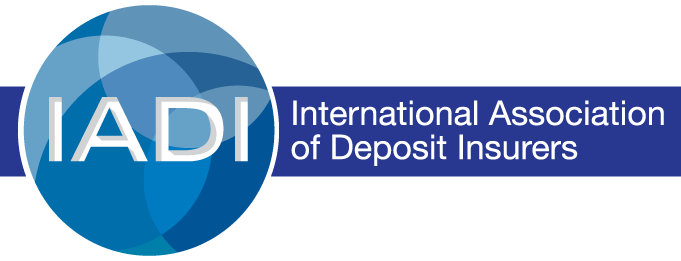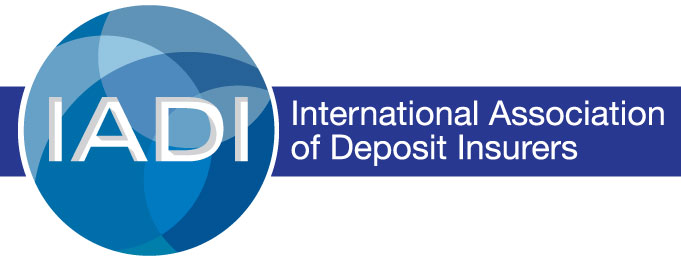Keynote speech by Eva Hüpkes, Secretary General, International Association of Deposit Insurers, at IADI Europe Regional Committee and European Forum of Deposit Insurers Joint Workshop, Berlin, Germany, 4 September 2023.
Good morning everyone. It’s great to be here today and to see so many faces in the room and online. This is my first official keynote address in my capacity as Secretary General of the International Association of Deposit Insurers. I joined IADI last month and it is a real honour to speak to you today here in the capital of my home country, Germany.
Let me begin by thanking Hilmar Zettler and the Bundesverband deutscher Banken, as well as Alfredo Pallini, Chairman of IADI’s European Regional Committee, for hosting this event with IADI. We are also pleased that the European Forum of Deposit Insurers is once again participating. Of course, the event could not take place without the preparations of the many people who helped to plan and prepare it in our respective organisations. I would particularly like to thank Eugenia Alamillo from the IADI Secretariat, who should be here to welcome you, and our colleague Taurai (who is here), as well as Juliane and Luise here in Germany, and Rafaella from our Italian member institution.
It is a fascinating time to be working on deposit insurance. Things may not be quite as exciting as they were in March, but the events of March and the tectonic shifts that are now taking place in the financial system as a result of digitalisation and advances in artificial intelligence mean that it is important that we examine their implications for deposit insurance systems.
Therefore, the theme of this workshop, “Redefining the Financial Safety Net: Tackling New Challenges and Shaping the Future of Deposit Insurance” is quite apt.
So how is IADI addressing these challenges? Meeting new challenges and shaping the future of deposit insurance is at the core of IADI’s mandate. Founded more than two decades ago, IADI has grown significantly to become a global organisation with 124 member organisations, including 95 deposit insurer members, 12 associates and 17 institutional partners. Its original purpose was to gather and share knowledge and expertise on deposit insurance issues. This remains one of our core activities, but in the meantime IADI has established itself as the primary global standard-setter for deposit insurance. In the wake of the 2008 global financial crisis, the Financial Stability Forum, the predecessor of the Financial Stability Board, called for a set of principles for effective deposit insurance systems. In response, IADI, together with the Basel Committee on Banking Supervision (BCBS), developed the Core Principles for Effective Deposit Insurance Systems (CPs). The Core Principles have become the recognised global standard for deposit insurers. They are regularly updated to reflect the evolving financial landscape and the role of deposit insurers. The last revision was in 2014, reflecting the increased role of many deposit insurers in crisis management and resolution.
A further review of the Core Principles was launched last year. It could not be more timely: The economic and financial environment in which IADI operates has changed radically since its inception. The stress in the banking sector earlier this year was a reminder of the importance of sound deposit insurance policies that must keep pace with the evolving banking environment.
Digital innovation is fundamentally changing the business of banking. Money can be transferred between accounts or financial institutions in minutes, allowing faster responses to changes in interest rates, financial news or perceived risks. Customers can also move deposits across borders more easily, and tend to do so when they find more favourable conditions abroad. The widespread adoption of central bank digital currencies (CBDCs) could also have a significant impact on banks and their business models.
Drawing lessons from the bank failures in the US and Switzerland earlier this year will help us understand how the financial safety net may need to be redesigned to meet new challenges.
The authorities in the US, the UK and Switzerland have carried out thorough analyses and reviews and identified potential lessons. I myself had the honour of participating in an expert group set up by the Swiss government to examine the lessons learned. Our report was published last Friday. While it focused on the lessons learned from the Credit Suisse failure, it also considered the impact of digitalisation on the design of deposit insurance. At the international level, the FSB has launched a review of the events of March and is expected to publish its conclusions later this year.
While we will have to wait for the final conclusions, it is clear that the global financial crisis reforms have proved their worth. Without them, the stress faced by individual banks would have led to wider contagion in the financial system. Banks had stronger capital and liquidity positions. Improved resolution planning and enhanced cross-border regulatory and supervisory cooperation meant that authorities were prepared and able to respond swiftly.
Nevertheless, the turmoil has highlighted a number of issues that merit further attention. These relate to the changing nature of deposits, crisis management, and the implementation of the international resolution framework.
In response to the events several proposals for reform of deposit insurance systems have been put forward. These include:
- First, an overall increase in the insurance cap, which could mitigate but not eliminate the risk of runs;
- Second, increased coverage for transaction accounts to mitigate the economic risks associated with payment disruptions;
- Third, unlimited coverage of all deposits, which would eliminate the risk of runs but would require very substantial measures to limit moral hazard (and would be inconsistent with our Core Principles); and
- Finally, one of the more novel proposals is to require deposit-taking banks to hold sufficient collateral with the central bank so that they can obtain funds at very short notice to meet unexpected withdrawals.
Beyond deposit insurance, there are other measures being considered to make banks more resilient and to protect depositors. Let me mention three:
- First there is the possible need for expansion (or long-term debt) requirement. This should help to ensure that adequate loss-absorbing resources are available and that bondholders absorb losses before depositors. Such requirements are already exist for all larger banks in the European Union. They are now under consideration in the US.
- Second, there is a further strengthening of preventive measures, including a review of liquidity requirements, the use of more rigorous stress tests for capital and liquidity, and earlier supervisory intervention even in cases where banks still meet all regulatory requirements, but are losing market confidence; and
- Third, the strengthening of resolution measures that support the continuity of banking operations and the continuity of depositors’ access to their funds, such as through transfers, or purchase and assumption (P&A) transactions.
These and other issues certainly merit further consideration. IADI provides a platform for discussion of these issues among its members, associates and with partners such as the European Forum of Deposit Insurers (EFDI).
Many of these challenges are complex, and addressing them will necessarily involve other participants in the safety net. These include bank supervisors, central banks, resolution authorities and finance ministries:
- Strong supervision can reduce the likelihood of bank failures and lower the potential burden on deposit insurance systems. Risk-based premiums can encourage more prudent risk-taking. Decisions on deposit insurance coverage can influence the intensity of supervision and vice versa.
- Central bank liquidity assistance and deposit insurance play different but complementary roles. Access to central bank liquidity, particularly in the event of a resolution, can help prevent or mitigate bank runs, thereby reducing the burden on deposit insurance systems.
- Deposit insurance and resolution are also closely linked components of the financial safety net. Deposit insurance focuses on depositor confidence; resolution aims at maintaining the continuity of critical bank functions. Resolution may require funding, which can in some jurisdictions may from the deposit insurance fund.
- In extreme cases, deposit insurance may be insufficient, and a public sector backstop may be needed.
It is therefore vital that deposit insurers engage with their safety net counterparts, both nationally and internationally. IADI provides a forum for this. Based at the Bank for International Settlements in Basel, it is well placed to engage with the relevant standard-setting bodies, in particular the Basel Committee and the Financial Stability Board.
Late last year, IADI held its first meeting with the Financial Stability Board’s Resolution Steering Group to exchange views on the lessons of recent events and their implications for policy development in our respective organisations.
Returning to the theme of this conference, “Redefining the Financial Safety Net: Tackling New Challenges and Shaping the Future of Deposit Insurance”, I am pleased to see that this workshop has attracted a wide range of stakeholders.
Being new in my role, a key question for me is: How can IADI most effectively serve as a forum for discussion of deposit insurance system issues and policy responses? And how can IADI best serve its members and associates (i.e., authorities other than deposit insurers with a role in the financial safety net)?
Let me share three reflections with you:
- First, I think it is important that we recognise the unique institutional designs and mandates of deposit insurers around the world. Recognising differences in institutional design and mandates will help tailor solutions that are effective at a local level. We must seek policy responses that accommodate differences while ensuring robust systems that meet the objectives of the IADI Core Principles.
- Second, we need to recognise that the objective of depositor protection and financial stability with other safety-net participants and that our respective policies interact and should be mutually reinforcing. Cooperation with other safety net participants – central banks, supervisory authorities, resolution authorities and finance ministries – is essential. Our joint meeting with the Financial Stability Board’s Resolution Steering Group at the end of last year was a start for a broader engagement with our safety net partners and stakeholders at different levels.
- Third, we need to recognise the important role of regional committees in addressing issues specific to regional banking systems. Different regions have specific regional characteristics and face different challenges. The sum will be greater than the parts if there is a common thread in their activities and if there are effective feedback loops so that each region and each member can learn from each other.
Today’s regional event allows us to discuss issues of particular interest in Europe. Let me take this opportunity to thank our hosts, the German Deposit Insurance Agency and the EFDI for co-hosting this event.
One pressing issue on the agenda is undoubtedly the Crisis Management and Deposit Insurance Directive and whether, and if so how, it provides adequate answers to the problems we face. This session will also be an opportunity for our colleagues in Europe to look at some experiences from outside the region.
The role of social media in financial markets is another topic we can’t afford to ignore. We’ll look at how social media can trigger bank runs and spread contagion. Looking ahead, we’ll discuss the ever-evolving landscape for deposit insurance. In this session, we’ll consider the impact of central bank digital currencies on financial stability, reimbursement procedures and resolution strategies.
We’ve assembled a lot of bright minds to tackle these complex issues, and we can look forward to an intense and enlightening two days. I would not like to finish without thanking our speakers and panellists who have taken time out of their busy schedules to be here, and those who are getting up very, very early from the FDIC to participate remotely.
We rely on our members, associates and partners to make events like today’s a success. To all of you in the room and online, I wish you fruitful and engaging discussions over the next two days.
Thank you for your attention.

